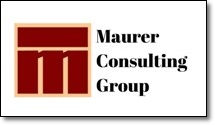Did anyone else see these unsettling statistics about small business websites on the SCORE website ? They created a clear and concise infographic on small business websites you might find interesting. The statistics revealed here (12/2014) are probably even higher today in terms of the impact of online sales from mobile device access.
Only 51% of small businesses have websites. If that isn’t bad enough, the following statistics cover other weaknesses of the sites that do exist:
- 70% have no call to action.
- 27% don’t provide a telephone number.
- 68% don’t have an email address on the home page.
- 82% don’t have social media accounts.
- 50% of online sales are lost when visitors can’t find content.
It’s hard to believe that any small business is not yet aware of the enormous growth in online sales and research. It’s no secret either, that the number of customers using mobile devices like smart-phones and tablets has grown by leaps and bounds. It’s time to pull your heads out of the sand, small business owners. You are losing sales by not being where today’s customers are – online.
- 97% of consumers search online for products & services.
- 70% compare prices or read reviews.
- 91% have visited a store because of an online experience.
- 96% of consumers research a product or service on their phone
- 73% of mobile searches trigger follow-up sharing, calls, sales or store visits.
- 37% use the Internet to find a store at least once per month.
Are You Part of the 51% With a Small Business Website?
Let’s say that you are one of the 51% of the enlightened: you have a small business website. That does not necessarily mean that your site is doing what you had hoped. The primary idea that goes along with investing in a website for your company is that it will work.
Working means that there will be increases in customers and sales. New customers will be found. Old customers will decide to do some online shopping when too busy to get in the car and drive to your brick and mortar store. Ideally, the amount of each sale will increase. Your advertising budget might even be reduced by a significant amount.
A small business website is supposed to be the answer to your dreams, right? Well, maybe. A lot of planning and thought needs to go into creating and launching a successful website. You need to know who your ideal customers are, something about them, what they want to buy, and where you can find them. All of this and yet other bits of information are needed to help you find them and reel them in to your site.
Getting customers to your small business website is just the beginning. There are so many different types and styles of websites out in Cyberspace, all clamoring for customers’ attention. Not only do they need to find your site, but they need to find it concise and simple to use, and in a very short period of time. Customer attention spans aren’t very long. If they aren’t impressed with the site itself, quickly, they may never get in deep enough to decide if you have something to solve their problem. Once they give up and leave, they may well never come back again to give you another chance.
Chart a Path Around a Well-Designed Small Business Website
 Customers need to be led, or at the very least, guided through your site as part of a well conceived plan. The site needs to take them step by step from being a casual browser, using precise steps that will engage them. Develop a goal for what you want visitors to your site to do. Then, make a plan on how you will get them there.
Customers need to be led, or at the very least, guided through your site as part of a well conceived plan. The site needs to take them step by step from being a casual browser, using precise steps that will engage them. Develop a goal for what you want visitors to your site to do. Then, make a plan on how you will get them there.
Not every visitor will come to your small business website to immediately make a purchase, especially if your products and services are high ticket items. They are there to browse, see what you have and decide if your products and services meet their needs. Customers need a number of questions answered before they push the ‘Buy Now’ button, move an item to your Shopping Cart or contact you. A sale is not guaranteed, Even with that additional information.
Yours may well be the ideal product or service, but customers still want to know more. Is it in stock, how quickly can they get it, what might shipping costs and taxes add to the cost? Rarely will you get lucky enough for someone to arrive at your website, fall in love and jump into a long term relationship. Like any relationship, a customer relationship needs to be slowly and carefully developed.
Building that relationship takes planning. What will you have to do to get a casual shopper from that mindset to one of making a purchase? It’s up to you and your web developer to make that happen. How, you might ask? Include a number of Calls-to-Action throughout, not only your marketing plan, but especially through your website.
What Is a Call-to-Action?
 Calls-to-Action are just what they seem: an attempt to get site visitors to take a specific action and move in a set direction. That direction should be toward making a purchase. The idea is to move them in a direction that will get them to do what you want them to do next; become more committed to doing business with your firm. The basis is your desire to move potential customers in a set of measured steps to become actual paying customers.
Calls-to-Action are just what they seem: an attempt to get site visitors to take a specific action and move in a set direction. That direction should be toward making a purchase. The idea is to move them in a direction that will get them to do what you want them to do next; become more committed to doing business with your firm. The basis is your desire to move potential customers in a set of measured steps to become actual paying customers.
Calls-to-action are intended to get someone who is just looking to become a paying customer. It’s about moving them from being a casual visitor, just looking at your store, to someone who clicks on ‘Buy Now’ and puts your item into your online shopping cart – and pays.
Brick and mortar stores have been using tactics like this for years. They put items that will appeal to children on lower shelves, feature items at the ends of aisles or showcase them in the middle of an aisle. Some retailers lay out aisles to map your route (actually ‘their’ desired route) through their stores and through checkout lanes before you can get to a door and escape. These may be more subtle, but they are still Calls-to-Action. Small business websites are just a new venue to conquer in making sales.
What Kinds to Calls-to-Action Work on Small Business Websites?
Assuming all customers – and lots of them – will land on your website to buy is a dangerous way to do business. Websites are big time marketing for any firm. Anything in your small business, especially marketing, needs a well thought out plan, or process, to achieve success. That plan needs a strategy with a clear beginning and end and the individual steps in between that will take customers to the desired end result.
Include at least one Call-to-Action on each page of your site. You can use more than one, but don’t overdo it. ‘Subscribe now’, ‘Download this report’, ‘Download my Free e-Book’, ‘Call today for an appointment’. Use Calls-to-Action to move prospects from one step of your Sales System Strategy to the next.
If Step One of your strategy is to meet prospects, a Call-to-Action about connecting with you on Twitter, Facebook or LinkedIn can easily achieve that goal. A next step might be connecting with them in social media, striking up a conversation as the means to engage them and help them get to know you and your brand. From there, offering some kind of useful free ‘gift’ could inch them even further toward your ultimate goal.
Focus interest on one of your products or services. Highlight an offering of an e-book or a free report about one product or service. Or, feature a specific product with a link to more information about it. A CPA might offer a tip sheet on ’10 Tips to Get Ready for Filing Your Taxes’ as a call-to-action. An interior designer might create a download of ’How an Interior Designer Can Add Value to Your Home.’ A retail shop might offer a discount coupon or ‘free sample’ offer of some new product to attract customers.
The Ultimate Goal of a Call-to-Action
Add Calls-to-Action to move the prospect’s attention toward your ultimate goal – converting a casual browser into a paying customer. Plain and simple. What do you get for your freebie gifts in those Calls-to-Action? Ideally, in the beginning, a potential customer’s name and email address. You can use that information for other marketing that will allow for more Calls-to-Action. As you move customers forward, perhaps an engagement – a contact through email or a phone call.
It is far beyond the right time to have a professional small business web presence. Start planning your marketing and website strategy now to make this happen for your firm. If people can’t find you, or learn anything about you, they certainly won’t be calling you to do business. Make it easy for them to do business with you. Move them a little closer to a sale at each opportunity.
Here’s my Call-to-Action for you. I would appreciate you sharing this post with a few small business colleagues and friends via the social media icons below. Thank you in advance.






